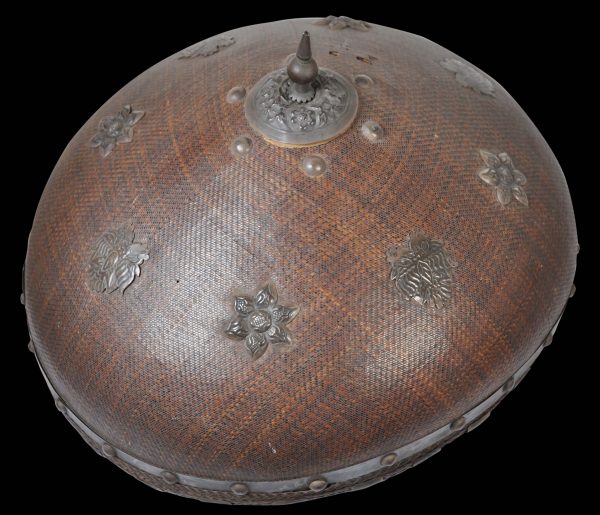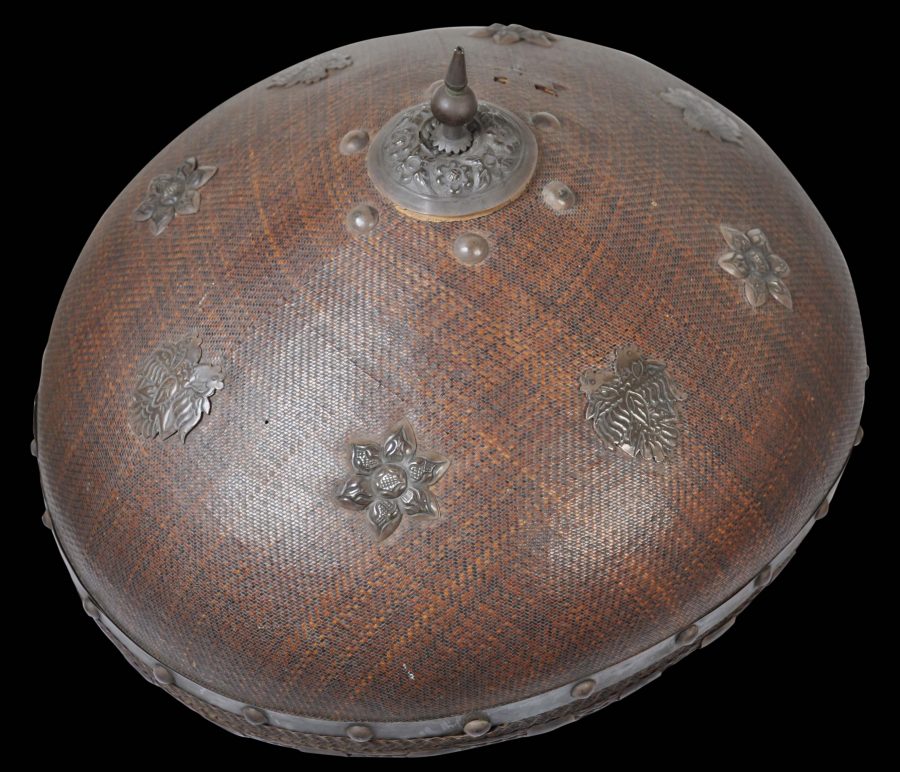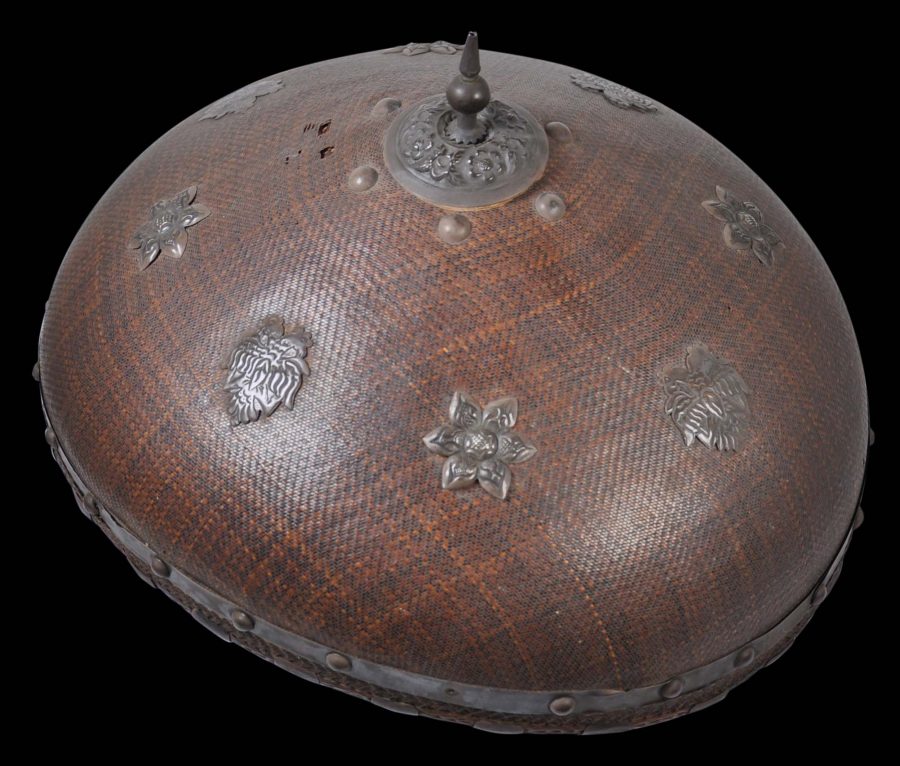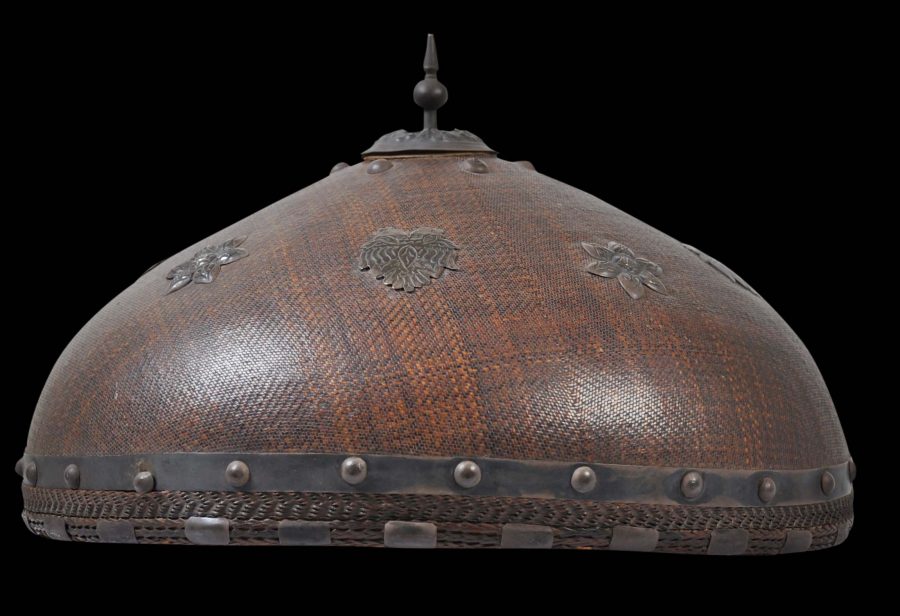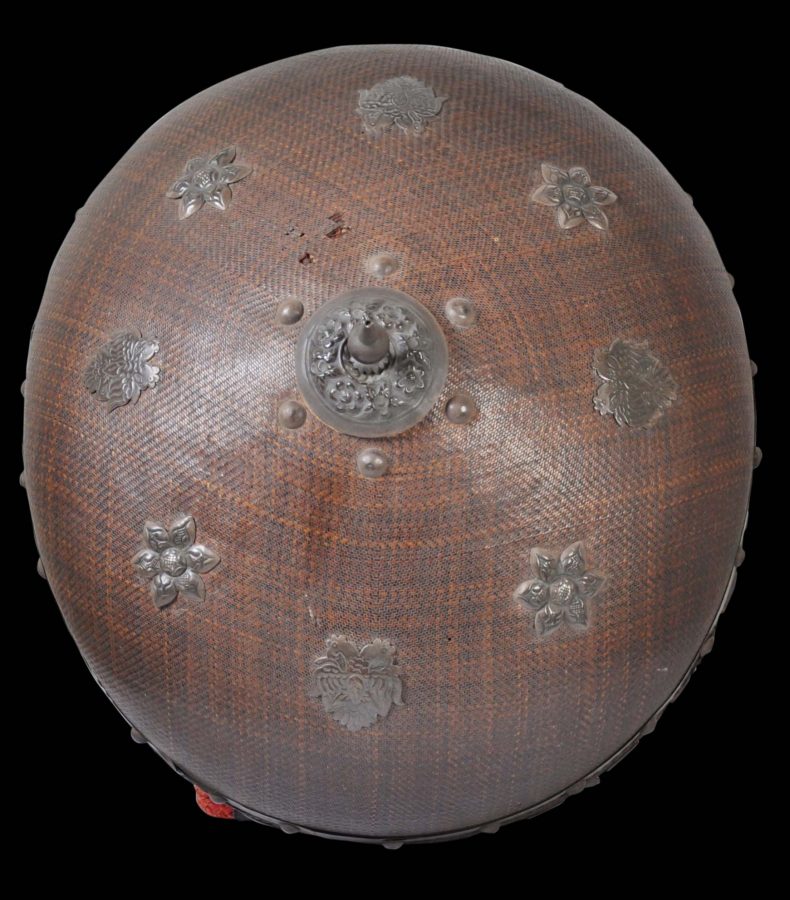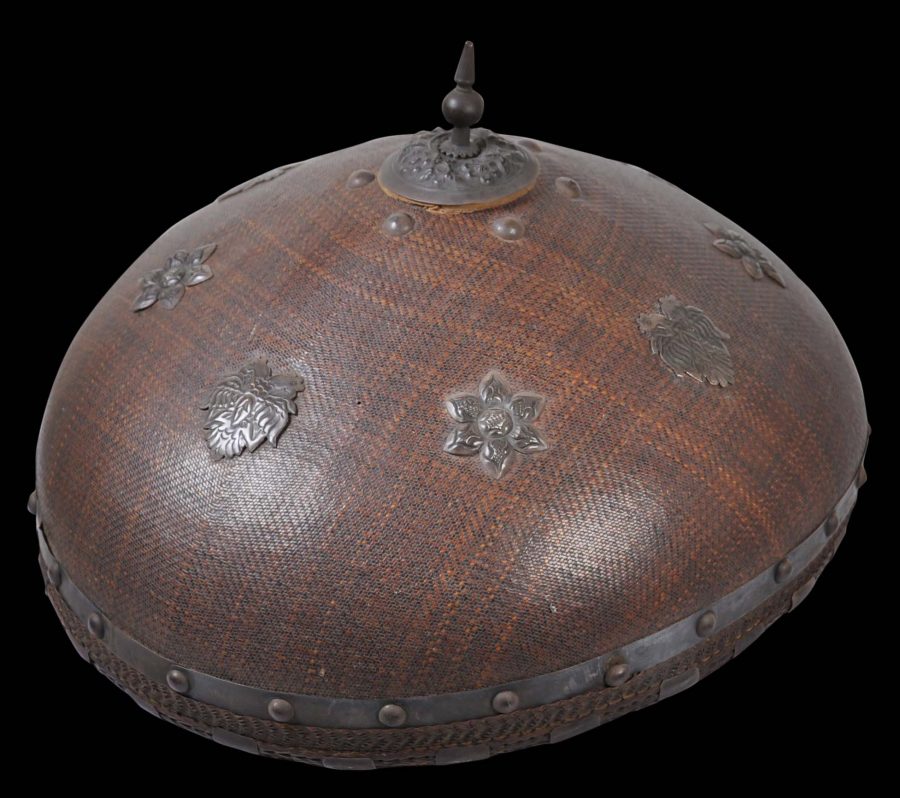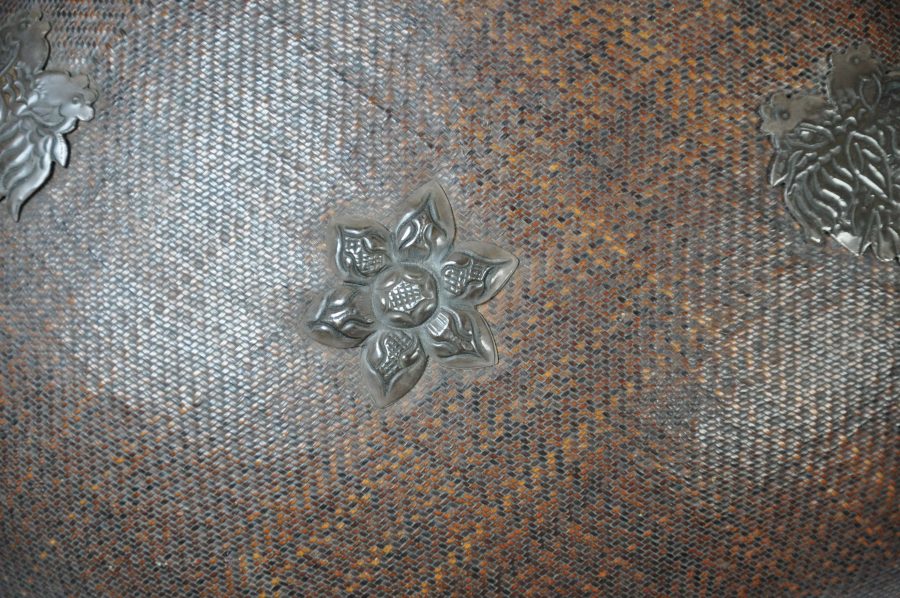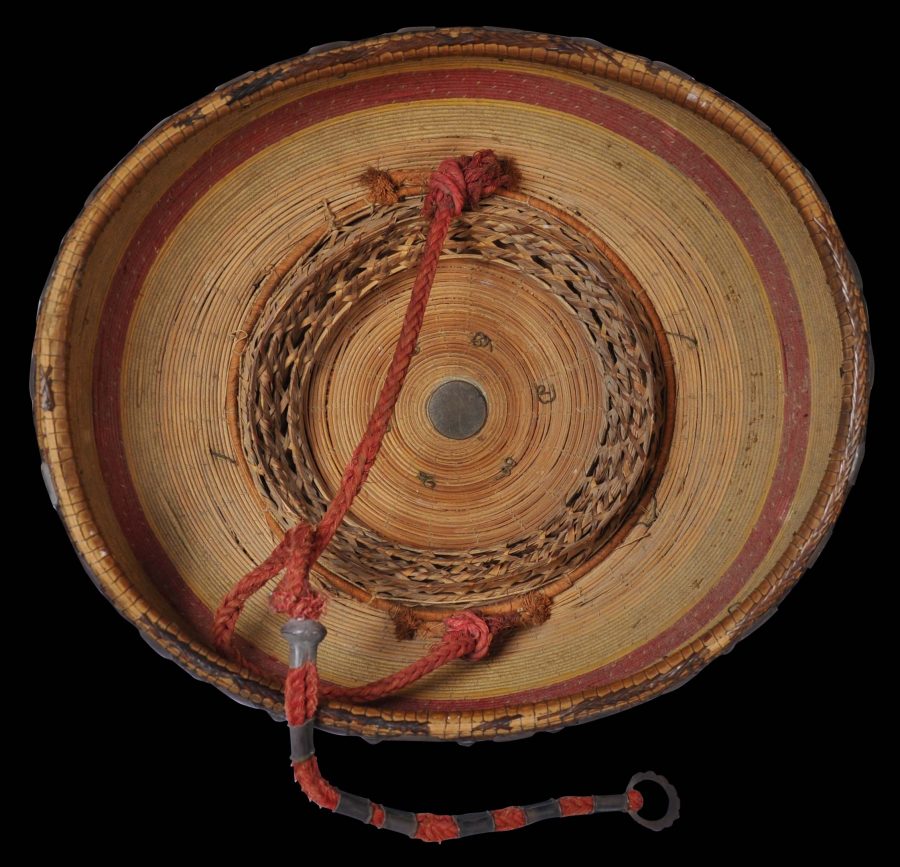Colonial Philippines’ salakot hats are rare.
This example is oval-shaped, domed and made from very finely-woven nito fibres, rattan and bamboo slithers with chased and engraved silver mounts, silver bands and studs. The interior retains the original basket like structure which fits over the crown of the head to hold the hat in place, as well as the original red cord shin strap which itself has silver mounts. Some of the silver mounts are shaped as double-headed parrots, a symbol originally used by some European royalty and then adopted by administrations and local royalty in the colonies.
It comes from nineteenth century Luzon, the largest and most important island of the Philippines and home to the capital Manila.
Its shape is based on a European colonial helmet or pith hat and dates to the Spanish colonial period. The Tagalog ethnic group of southern Luzon wore similarly-shaped hats made of woven straw. Possibly these too were based on the pith helmet.
Public functionaries in the Spanish colonial administration – the gobernadorcillos (the municipal judges or mayors) and cabezas de barangay (equivalent to the head of a village or district ward in the Spanish colonial system) occasionally would wear such hats at ceremonial events. Certainly, they were worn by members of the landed gentry class – the illustrado. The hats, being made of silver and finely-woven rattan instead of the usual straw, were meant to symbolise the power of the wearers.
The Spanish period began when Portuguese explorer Ferdinand Magellan arrived in the Philippines and claimed the islands for Spain in 1521.
Colonisation began when Spanish explorer Miguel López de Legazpi arrived from Mexico in 1565 and formed the first European settlements in Cebu. Manila was established as the capital of the Spanish East Indies in 1571.
Spanish rule contributed greatly to bringing political unity to the archipelago. The Philippines was governed as a territory of New Spain (Mexico) between 1565 and 1821, and was administered directly from Madrid after the Mexican War of Independence thereafter.
Galleons travelled between South America and the Philippines between the sixteenth and nineteenth centuries and the so-called galleon-trade introduced foods such as corn, tomatoes, potatoes, chilli peppers, and pineapples to the Philippines.
Catholicism also was introduced as was Spanish colonial administration systems.
The Spanish-American War began in Cuba in 1898 and this reached the Philippines. The Philippines declared independence from Spain on June 12, 1898 and the First Philippine Republic was established the following year. Meanwhile, the islands were ceded by Spain to the United States for US$20 million dollars in that same year and despite local protestations, the US assumed control over the Philippines.
This hat provides excellent testimony to mestizo art forms brought about by European colonisation in Asia. It is a curious, now quite rare and beautiful item. There are minor losses to the rim and a small area of minor loss to the exterior fabric if the hat. All the main silver plaques are present. There is minor denting to the finial spike and silver surrounds, and all the silver is quite dark from tarnishing. The presence of the original chin strap and the associated silver mounts to the strap is a strong attribute.
related examples are illustrated in Afable (2013, p. 304) and Henkel (2009, p. 102).
References
Afable, P., et al, Philippines: an Archipelago of Exchange, ACTES SUD/ Musee du Quai Branly, 2013.
Henkel, D. et al, Land of the Morning: The Philippines and its People, Asian Civilisations Museum, 2009.
Villegas, R., Kayamanan: The Philippine Jewellery Tradition, Central Bank of the Philippines, 1983.


